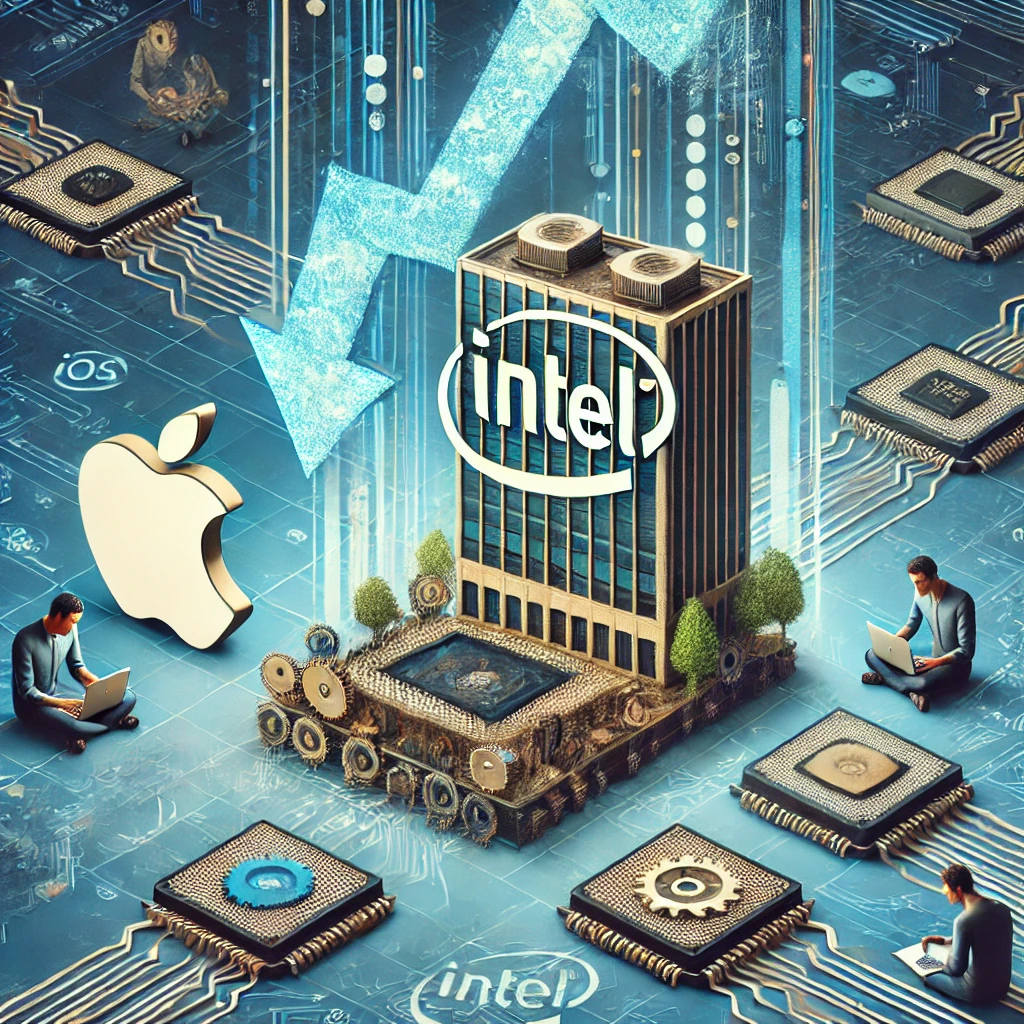In recent times, we have witnessed a significant downturn in Intel Corporation’s stock value, a phenomenon that has profound implications for various sectors, notably the tech industry, where Intel’s influence is deeply entrenched. This financial decline reverberates through the iOS environment, a domain intricately tied to the fortunes of tech giants. The implications of Intel’s misfortunes extend beyond the immediate; they penetrate the very fabric of the broader iOS ecosystem.
The Intel Stock Crash: An Overview
The precipitous fall in Intel’s stock can be attributed to a confluence of factors: supply chain disruptions, heightened competition, and delays in the deployment of their next-generation chips. Intel’s struggle to maintain parity with rivals such as AMD and NVIDIA, compounded by the global semiconductor shortage, has significantly strained its financial performance. Consequently, investor confidence has waned, precipitating a sharp decline in stock prices. In response, Intel has announced a drastic measure—reducing its workforce by 15%.
Why iOS Developers Should Care
- Impact on Legacy Support and Performance:
- Continued Support for Intel Macs: Despite Apple’s progressive transition to Apple Silicon, a substantial number of Macs in current use are powered by Intel processors. A 15% reduction in Intel’s workforce inevitably means a slower update cycle and diminished support for these processors. This could manifest as significant challenges for developers in maintaining and optimizing their applications for Intel-based Macs.
- Optimization Challenges: The reduction in human resources at Intel is likely to hamper their ability to provide timely software optimizations. This can lead to increased performance issues and compatibility problems for applications running on Intel-based hardware, directly affecting the user experience.
- Cross-Platform Development:
- Tools and Frameworks Adjustments: The tools and libraries that developers rely on, optimized for Intel’s architecture, may suffer from slower updates and reduced support. This disruption necessitates a reevaluation and potential replacement of these tools, which can be both time-consuming and costly.
- Unified Development Strategy: The workforce reduction might accelerate the shift towards ARM architecture, requiring developers to reallocate resources to update or replace Intel-optimized tools and frameworks, thereby complicating development strategies.
- Supply Chain and Component Sourcing Challenges:
- Hardware Availability: Intel’s workforce reduction could exacerbate existing supply chain issues, leading to delays in the production and availability of components. This has a direct impact on the manufacturing schedules of iPhones, iPads, and Macs, potentially delaying product launches and limiting device availability.
- Cost Implications: Increased pressure on the supply chain could result in higher component costs, which might be transferred to consumers. This could slow the adoption of new devices and, by extension, the latest iOS features and technologies.
- Economic and Market Sentiment:
- Investment in Tech: A significant downturn and workforce reduction at Intel can dampen investor sentiment towards the tech sector, potentially leading to reduced investment in tech startups and innovation. This scenario can result in fewer opportunities for iOS developers to explore new tools, platforms, and collaborative ventures.
- Industry Health: Intel’s health, as a pivotal player in the tech industry, directly influences the overall pace of technological advancement. A weakened Intel could decelerate the pace of innovation, indirectly impacting iOS development.
- Competitive Landscape:
- Advancements from Rivals: Intel’s workforce reduction might allow competitors like AMD and NVIDIA to gain more ground, leading to unforeseen shifts in the technology landscape. Staying abreast of these developments is crucial for iOS developers to maintain their competitive edge.
- New Opportunities: This changing landscape might also open new avenues for iOS developers to leverage emerging technologies and partnerships stemming from Intel’s competitors’ advancements.
- Strategic Adaptation:
- Proactive Measures: Understanding the broader implications of Intel’s workforce reduction enables iOS developers to proactively adapt their strategies, ensuring resilience and continuity in their projects.
- Innovation Potential: Effectively navigating these changes can place developers at the forefront of innovation, capitalizing on the shifts within the industry to deliver cutting-edge applications and solutions.
A Positive Outlook
Amidst the challenges, there exists a silver lining—a beacon of opportunity that shines through Intel’s reduction in workforce:
- Accelerated Transition to Apple Silicon: Intel’s struggles might expedite Apple’s shift towards its custom-designed Apple Silicon chips. For iOS developers, this implies a more concentrated effort on optimizing apps for a unified ARM architecture, simplifying development and enhancing performance across Apple’s entire ecosystem.
- Greater Focus on ARM-Based Development: The shift towards ARM architecture, bolstered by the success of Apple Silicon, encourages developers to innovate, creating more efficient, high-performance applications. This focus can lead to better app performance, longer battery life, and an enhanced user experience on iOS devices.
